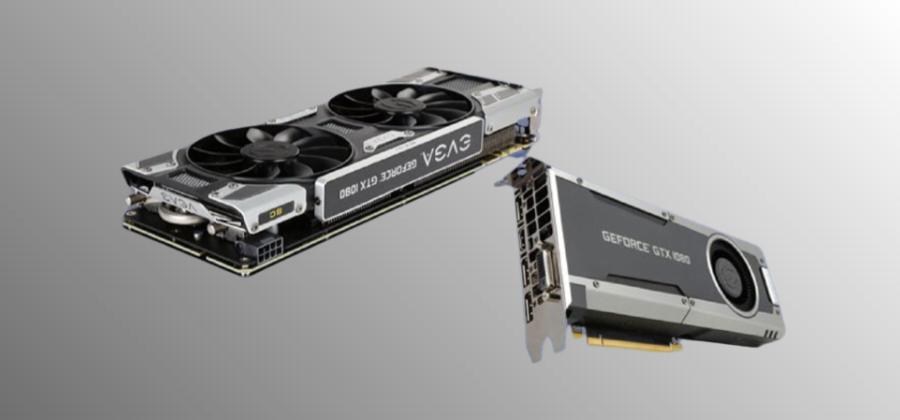Knowing how to see what power supply I have is essential for various reasons, whether you’re a computer enthusiast, a gamer, or a regular user. The power supply unit (PSU) is responsible for delivering the necessary electrical power to all the components of your computer system. Understanding your power supply’s capabilities ensures compatibility with other hardware components, enables efficient power management, and helps prevent system instability or failures.
To determine the power supply you have, you can follow different methods, both physical and software-based. Physically inspecting the PSU involves opening your computer case and examining the label on the power supply unit. On the other hand, software tools provide detailed system information, including power supply specifications, without physically accessing hardware.
This guide will explore various methods for identifying your power supply. We’ll cover both the physical inspection process, where you’ll learn how to locate and examine the PSU label, and software-based approaches, where you’ll discover how to retrieve power supply information using system information tools.
By understanding how to see what power supply you have, you’ll gain valuable insights into your computer system’s power capabilities, allowing you to make informed decisions when it comes to upgrading components, troubleshooting issues, or ensuring compatibility with power-hungry devices. So, let’s dive into the methods and tools that will help you uncover the details of your power supply unit.
Checking the power supply unit (PSU) physically
Powering off and unplugging the computer
- Shut down your computer correctly to ensure a safe power-off state.
- Unplug the power cord from the wall outlet to disconnect the electricity supply.
Opening the computer case
- Remove any external cables or peripherals connected to your computer.
- Place the laptop on a stable surface with good lighting.
- Depending on the computer case type, you may need to remove screws or use latches to open the case.
- Carefully remove the side panel of the computer case to gain access to the internal components.
Locating the power supply unit
- Once the computer case is open, locate the power supply unit (PSU). It is usually located at the back of the computer.
- The PSU is a rectangular box-shaped component with multiple cables coming out from it.
Examining the PSU label
- Look for the label on the PSU. It is typically affixed to one side of the unit.
- Read the information provided in the title to identify the power supply details.
Manufacturer and model information
Note the brand and model name of the power supply.
Wattage and voltage specifications: Identify the wattage rating, which indicates the maximum power output, and the voltage specifications, such as 12V, 5V, and 3.3V rails.
Additional information: Some labels may provide further details, such as efficiency ratings, certifications, or modular design information.
Recording the information
- Take note of the power supply’s manufacturer, model, wattage, and voltage specifications.
- Using a pen and paper may be helpful, or taking a clear photograph of the PSU label for future reference.
Closing the computer case
- After examining the PSU, carefully put the side panel back on the computer case.
- Ensure the board is securely fastened, using screws or latches if necessary.
Powering on the computer
- Once the computer case is closed, reconnect all the cables and peripherals.
- Plug the power cord back into the wall outlet.
Following these steps, you can physically inspect your power supply unit to gather important information about its manufacturer, model, wattage, and voltage specifications. This knowledge will assist you in understanding your power supply’s capabilities and ensure compatibility when upgrading or troubleshooting your computer system.
Checking the power supply unit (PSU) through the software
To determine the details of your power supply unit (PSU) using software tools, follow these steps:
- Power on your computer and ensure that the operating system has fully loaded.
- Open a web browser and navigate to a trusted website that offers system information tools.
- Download and install a reliable system information tool such as CPU-Z, HWiNFO, Speccy, or AIDA64.
- Launch the installed system information tool from your computer’s Start menu or desktop.
- Look for a section or category labelled “Power” or “Power Supply” within the system information tool.
- Find the manufacturer and model details of your power supply within this section.
- Note the wattage rating, which indicates the maximum power output of your PSU.
- Take note of the voltage specifications, such as 12V, 5V, and 3.3V rails.
- Pay attention to any other relevant information provided, such as efficiency ratings, fan speeds, or temperature readings related to the power supply.
By utilizing system information tools, you can gather comprehensive information about your power supply without needing to access the hardware physically. These software-based methods provide convenient and detailed insights into your PSU’s manufacturer, model, wattage, voltage specifications, and other relevant data.
Alternative methods for determining power supply information
There are several alternative methods you can use to determine information about your power supply unit (PSU):
Check the power supply’s original documentation.
Locate the original documentation or manual with your computer or power supply. Look for specific details regarding the power supply, such as the manufacturer, model number, wattage, and voltage specifications. If you cannot find the physical documentation, check the manufacturer’s website for downloadable manuals or product information.
Visit the manufacturer’s website.
Identify the manufacturer of your power supply and visit their official website. Look for a support or product page related to power supplies. Enter your power supply’s model number or search for your specific product. Browse the product details to find information about wattage, voltage, and other relevant specifications.
Contact technical support or customer service.
If you cannot find the necessary information through physical inspection, software tools, or the manufacturer’s website, consider contacting the manufacturer’s technical support or customer service. Prepare the relevant details about your power supply, such as the manufacturer, model, and any other information you have gathered. Contact them through their provided channels and inquire about the specifications of your power supply.
Consult third-party websites or forums.
Several online communities, forums, and websites are dedicated to computer hardware and power supplies. These platforms often have discussions or threads where users share their experiences and knowledge about various power supply models. Searching for your power supply model or requesting assistance in these communities can provide valuable insights and information.
Utilizing these alternative methods, you can gather information about your power supply unit even if you cannot physically access it or find the details through software tools. These approaches help you find the necessary specifications and ensure compatibility when upgrading or troubleshooting your computer system.
Summary and conclusion
Determining the details of your power supply unit (PSU) is crucial for understanding its capabilities, ensuring compatibility with other hardware components, and managing power efficiently. This guide explored various methods for identifying your power supply information.
Firstly, we discussed the process of physically checking the PSU. It involved powering off and unplugging the computer, opening the computer case, locating the power supply unit, examining the PSU label for manufacturer, model, wattage, and voltage specifications, and recording the information for future reference.
Secondly, we explored using software tools to gather power supply information. This method involved powering the computer, launching the operating system, downloading and installing a reliable system information tool, running the tool to obtain detailed hardware information, and locating the power supply information within the tool, such as manufacturer, model, wattage, and voltage specifications.
Furthermore, we mentioned alternative methods for determining power supply information. These included checking the power supply’s original documentation, visiting the manufacturer’s website for product details, contacting technical support or customer service for assistance, and consulting third-party websites or forums where users share their experiences and knowledge.
In conclusion, knowing the specifics of your power supply is essential for maintaining a stable and compatible computer system. Following the methods discussed in this guide, whether through physical inspection, software tools, or alternative approaches, you can gather the necessary information about your power supply’s manufacturer, model, wattage, voltage specifications, and more. This knowledge empowers you to make informed decisions regarding upgrading components, troubleshooting issues, and ensuring efficient power management. Remember to exercise caution when working with computer hardware and always refer to manufacturer guidelines or seek professional assistance.
Frequently Asked Questions
How do I determine the wattage of my power supply?
There are several ways to determine the wattage of your power supply. One method is to physically inspect the PSU label by opening the computer case and examining the label or using a system information tool. Another way is to check the power supply’s original documentation or visit the manufacturer’s website for product details. Additionally, you can contact the manufacturer’s technical support or consult online forums for assistance.
Can I use software tools to check my power supply’s specifications on a laptop?
You can use software tools to check a laptop’s power supply specifications. System information tools such as CPU-Z, HWiNFO, Speccy, or AIDA64 are compatible with laptops. They can provide detailed information about your power supply unit, including manufacturer, model, wattage, and voltage specifications. Download and install a reliable system information tool and run it on your laptop to retrieve the necessary information.
Is opening my computer case to inspect the power supply safe?
Opening your computer case to inspect the power supply physically should only be done when you are familiar with computer hardware and take the necessary precautions. Before opening the case, ensure that your computer is powered off and unplugged from the power source. Use proper anti-static measures, such as grounding yourself, to prevent static electricity damage. If you are unsure or uncomfortable, you should seek assistance from a professional technician.
What should I do if I cannot find the necessary information about my power supply through any of the methods mentioned?
If you cannot determine the necessary information about your power supply through physical inspection, software tools, or other methods, there are a few options you can consider.
First, check if there are any alternative documentation sources, such as user manuals or product guides specific to your computer model or power supply brand.
Second, contact the manufacturer’s technical support or customer service for assistance. They can provide you with the required specifications based on your information.
Lastly, consult online communities or forums dedicated to computer hardware, where experienced users may offer insights or suggestions based on their knowledge and expertise.










